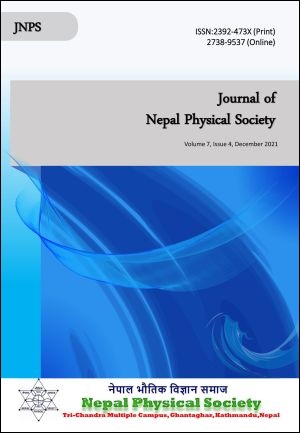Estimation of Time Evolution of Muon Spin Polarization in 14N and 15N Systems
DOI:
https://doi.org/10.3126/jnphyssoc.v7i4.42925Keywords:
muon, muon spin rotation and relaxation, quantum simulation, spin dipole interactionAbstract
In muon spin rotation and relaxation (μSR) method, time evolution of muon spin polarization provides the information about local electronic and spin dynamic states of the material. Quantum simulation and estimated frequency of calculated the spectra help to interpret the observed polarization spectra. Based on spin dipole interaction between the muon and nearby nuclei (14N, 15N and proton) in zero field measurement case, muon spin polarization spectra and corresponding frequencies are estimated using the quantum simulation. The oscillation frequency increases with approaching the muon towards the nuclei. Variation of separation between frequency positions with changing distance between muon and nuclei indicates the distribution of the magnetic field at the muon site. This study will help to distinguish the origin of oscillation in zero field μSR spectra in the isolated system containing 14N and 15N nuclei (e.g., glycine with 14N, glycine with 15N).
Downloads
Downloads
Published
How to Cite
Issue
Section
License
All right reserved. No part of this Journal may be reproduced in any form or by any electronic or mechanical means, including information storage and retrieval system, without permission in writing from the publisher, except by a reviewer who may quote brief passage in a review. The views and interpretation in this journal are those of author(s) and they are not attributable to the NPS.




